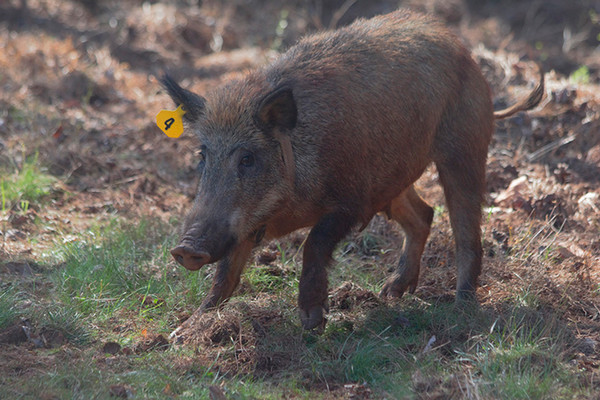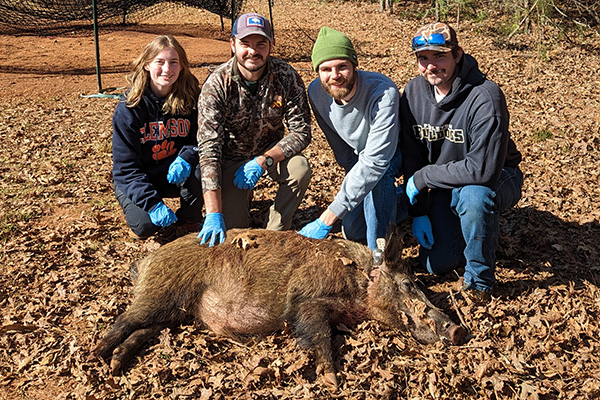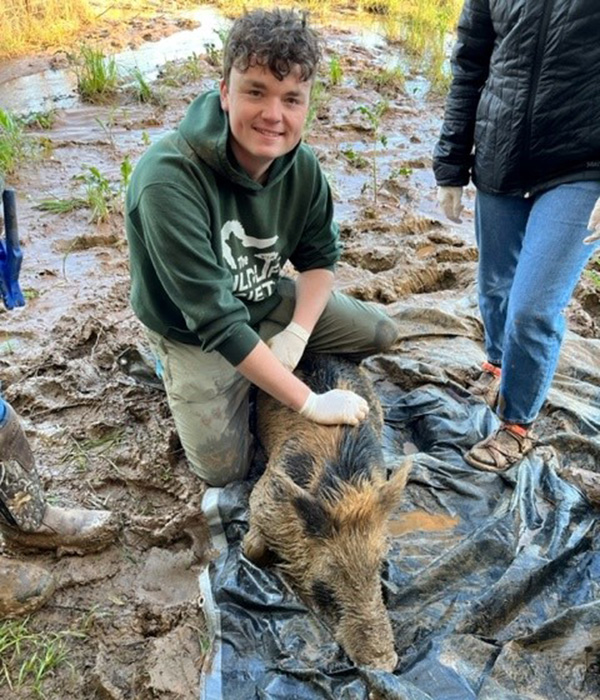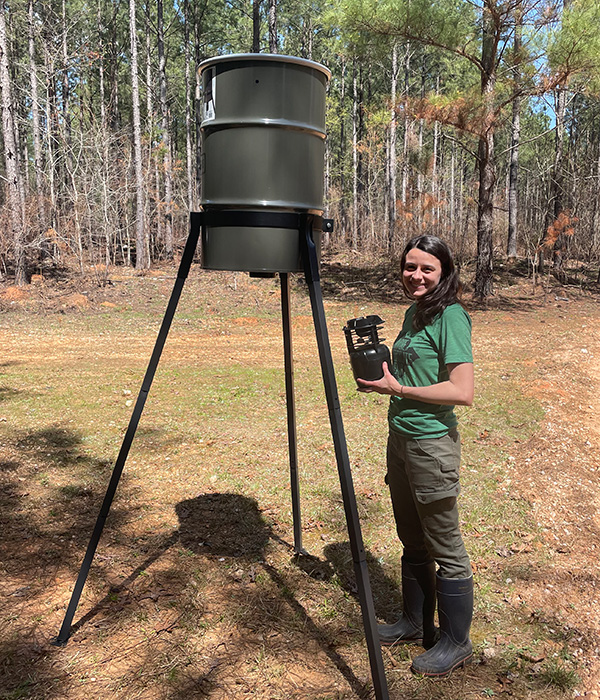Overview
Research is a powerful tool used to understand how animals interact with the world around them. Many aspects of wildlife management are based on sound, scientific research. Clemson University has contributed to the knowledge base about wild hogs.
Undergraduate and graduate research projects have been used to shed light on how these animals use the world around them and what it might mean for the management of the species.
This research will help managers come up with effective strategies to manage hog populations. We still have much to learn about these animals, so continuing research is crucial when it comes to solving the pig problem.

Wild pig with a collar after release. (Photo by Andrew Jamison)



